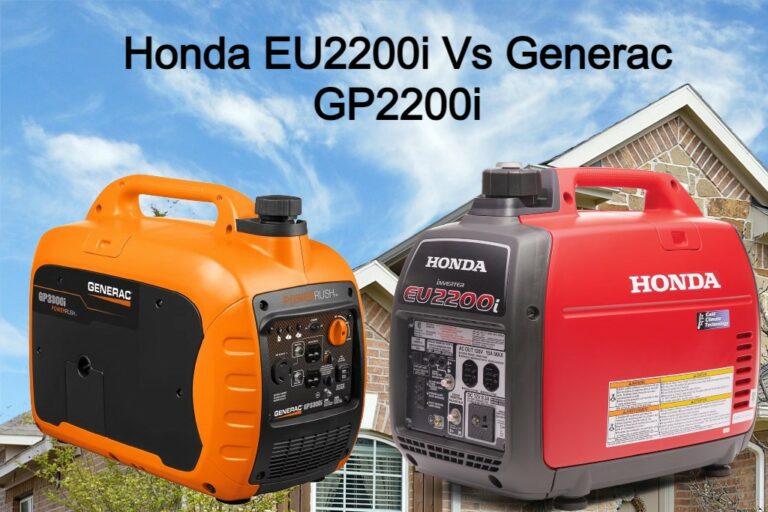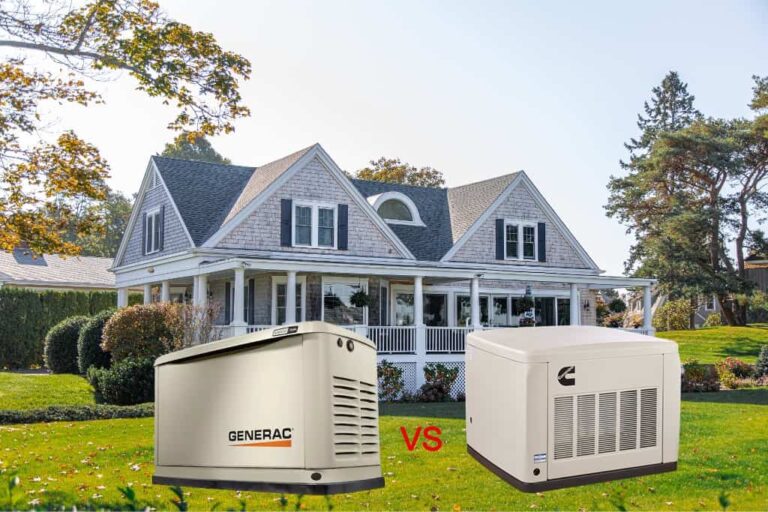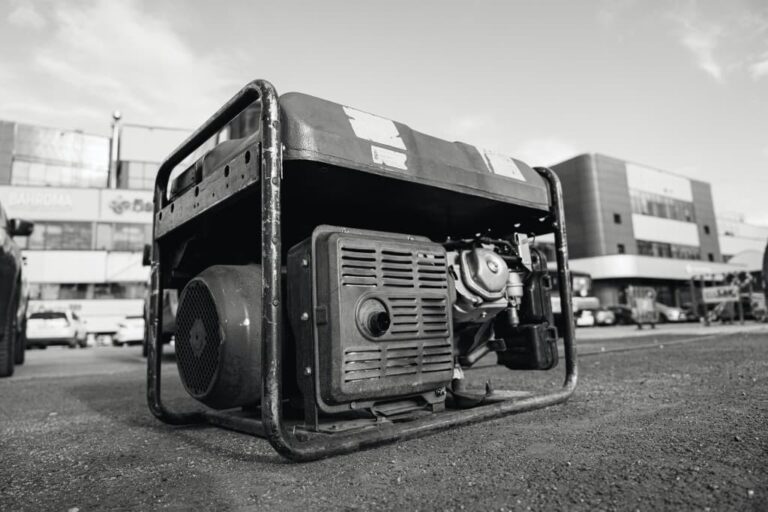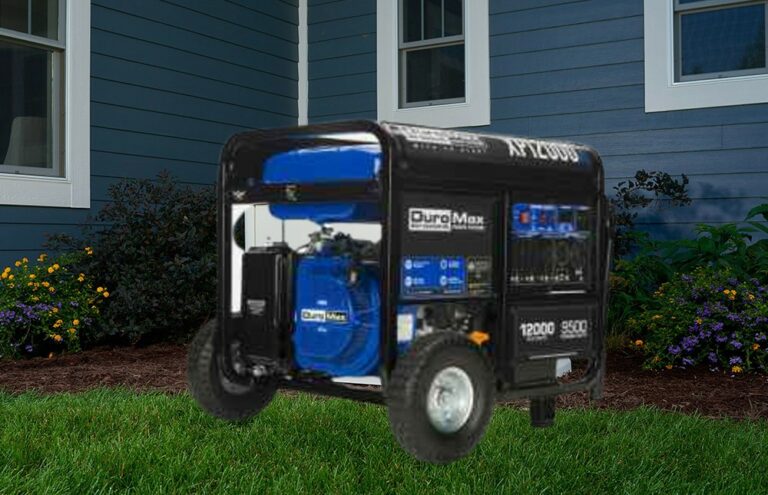Powering Your Appliances With Portable Generators: a Guide to Wattage and Safety

In a world where power outages can disrupt daily life, it is crucial to have a reliable backup plan. Portable generators are the lifeline that keeps appliances running when the lights go out.
But how do you navigate the world of wattage and ensure safety? In ‘Powering Your Appliances With Portable Generators: A Guide to Wattage and Safety,’ readers will find a comprehensive resource that not only demystifies generator ratings but also provides valuable tips on fuel consumption, safety precautions, and even water supply during outages.
So, come with us on this empowering journey towards preparedness and belonging.
Understanding Generator Ratings and Wattage Calculation
Understanding Generator Ratings and Wattage Calculation
Portable generators are rated based on their maximum output in watts or kilowatts, which determines the simultaneous usage of appliances. Calculating the total wattage is essential to avoid overloading the generator.
It is imperative to conduct thorough research and comprehend the wattage requirements of each appliance to ensure a safe power supply. Appliances with compressors, such as refrigerators or air conditioners, necessitate a power surge during startup, which can be significantly higher than the running watts. Hence, it is vital to consider the starting wattage when calculating the overall wattage.
To prevent overloading, it is advisable to utilize a power strip equipped with a built-in circuit breaker. By considering these factors and accurately calculating the total wattage, individuals can safely power their appliances with portable generators, avoiding any potential damage or disruptions.
Duration of Use and Fuel Consumption
To guarantee uninterrupted operation, users must monitor the fuel level and add more when needed when using a generator for an extended duration. This is vital for maintaining fuel efficiency and maximizing the generator’s runtime.
By regularly checking the fuel level and refilling as necessary, users can avoid disruptions and keep their essential appliances powered during power outages.
It is important to comprehend that the longer a generator operates, the greater the fuel consumption. Hence, having an adequate fuel supply is crucial to sustain the generator’s operation for the desired duration.
Safety Precautions With Portable Generators
Operating a generator outdoors is essential to prevent the production of carbon monoxide, a deadly gas. To ensure the safe use of portable generators, there are important safety precautions that need to be followed.
Here are three key safety measures for generator maintenance and safe storage:
- Regular generator maintenance: It is vital to perform routine maintenance on your generator to keep it in optimal working condition. This includes checking the oil levels, cleaning or replacing air filters, and inspecting the fuel system for leaks. Regular maintenance helps prevent malfunctions and ensures the generator operates safely.
- Safe storage: When not in use, generators should be stored in a secure location protected from the elements. This can help prevent damage and ensure the generator is ready for use when needed. It is important to keep the generator away from flammable materials and ensure it is stored in a well-ventilated area to prevent the buildup of harmful gases.
- Follow manufacturer’s instructions: Always adhere to the manufacturer’s instructions for the safe operation of the generator. This includes proper starting and shutting down procedures, as well as understanding the generator’s capacity and limitations. Following these instructions helps prevent accidents and ensures the generator operates safely.
Water Supply and Toilet Usage During Power Outages
Water Supply and Toilet Usage During Power Outages
During power outages, electricity shortages can lead to disruptions in the water supply, leaving individuals without access to water for drinking, cooking, and other essential needs. Furthermore, the ability to flush toilets may be limited as most toilets rely on electricity to fill the tank and flush effectively.
To tackle these challenges, alternative toilet options and water conservation methods can be employed. For instance, manually filling the toilet tank with water can serve as a temporary solution to facilitate flushing. Minimizing toilet flushing during power outages is also advisable to conserve water.
In addition, it is crucial to have a backup water supply, such as bottled water or stored water in containers. By implementing these alternative approaches and water conservation techniques, individuals can better manage their water usage and uphold hygiene standards during power outages.
Importance of Portable Generators and Preparedness Tips
Portable generators play a vital role in ensuring individuals can maintain their basic necessities during power outages. They serve as a backup power source, providing emergency power to essential appliances and devices. With a portable generator, people can guarantee access to crucial items such as refrigerators for food preservation, heaters for warmth, and lights for visibility. This instills a sense of security and belonging, knowing that daily routines can continue even in the face of power disruptions.
To maximize the advantages of a generator, it is important to comprehend the wattage requirements of each appliance and calculate the total wattage needed. Additionally, adhering to safety precautions, such as operating the generator in a well-ventilated area and avoiding overloading, is crucial for a safe and seamless experience.
Choosing the Right Wattage for Your Appliances
Understanding the significance of portable generators and preparing for power outages is just the beginning. The subsequent step involves selecting the appropriate wattage for your appliances.
This task entails computing your power requirements and taking into account the efficiency of the generator. When calculating power needs, it is vital to know the wattage specifications for each appliance you intend to power. This information can typically be found on the label or in the user manual of the appliance.
Additionally, it is important to consider the starting wattage or surge wattage, which denotes the additional power needed to initiate appliances with compressors. Generator efficiency is also a crucial aspect to consider. It is advisable to seek out generators with high-efficiency ratings, as they will deliver more power while consuming less fuel.
Maintaining and Storing Your Portable Generator
To properly maintain and store a portable generator, users must follow the manufacturer’s instructions and perform regular maintenance tasks. This ensures the generator remains in good working condition and is ready for use.
Here are some key points to keep in mind for generator maintenance and storage:
- Perform regular oil changes and filter replacements to ensure the engine runs smoothly.
- Keep the generator clean from dirt and debris, which can impact its performance.
- Store the generator in a dry and secure location to protect it from the elements and potential theft.
Frequently Asked Questions
Are There Any Regulations or Guidelines for Using Portable Generators in Residential Areas?
There are regulations and guidelines for using portable generators in residential areas. These guidelines include restrictions on generator noise levels to ensure a peaceful environment and to prevent potential health risks from excessive noise exposure.
Can I Connect My Portable Generator Directly to My Home’s Electrical System?
No, it is not safe to connect a portable generator directly to a home’s electrical system. This can cause back feeding and pose a severe risk of electrocution to utility workers. It is also important to follow safety guidelines when using a generator for camping.
How Often Should I Perform Maintenance on My Portable Generator?
Generators require regular maintenance to ensure optimal performance. Typical tasks include checking oil levels, cleaning air filters, and inspecting spark plugs. The frequency of maintenance depends on usage, but a general guideline is every 6-12 months or after 30-50 hours of operation.
Can I Use My Portable Generator During Rainy or Wet Conditions?
You can use a portable generator during rainy or wet conditions, but precautions must be taken. Ensure the generator is protected from water and use it in a dry area.
Are There Any Safety Measures I Should Take When Storing My Portable Generator?
When storing a portable generator, it’s important to take safety measures. Proper generator maintenance includes storing it in a well-ventilated area, away from flammable materials. Follow the manufacturer’s instructions for safe storage to prevent accidents.





